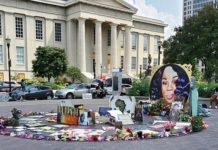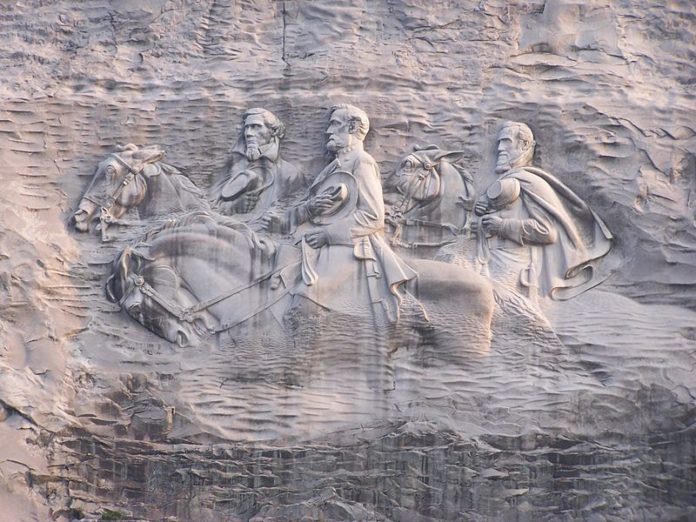
Photo: Wikimedia Commons
As statues venerating Confederate heroes fall across America, just as fiery defenses of their legacy resound from the White House and elsewhere, University of Texas at Austin Professor Richard J. Reddick reminds us that these symbols in stone and bronze are not relics of a distant era.
Rather, Reddick argues in this conversation with historian Jeremi Suri and student Zachary Suri, these monuments are very much present-day and ongoing assaults on equality, equity, justice and democracy in a nation whose still-deep divides are revealed by both a pandemic and growing protest and revulsion at police violence.
“You can always have regard for individuals or family members who took up arms because their family was part of this,” Reddick said in the interview recorded for the This is Democracy podcast in June. “But in its aggregate, it was a war, and it was a mission grounded in White supremacy and the subjugation of Black people and Native people.”
In the main, the conversation below focuses on the broad history and social contours of the so-called “Lost Cause” movement to keep the spirit of the Confederacy alive as its soldiers began to die off at the turn of the century. But the dialogue also tackles the ways this movement resurged in reaction to the civil rights movement of the 1950s and 1960s, becoming a contemporary counter movement to stifle the gains of voting and other foundational rights made by Black Americans. As such, the discussion provides historical context for not just the Confederate Soldiers Monument standing in front of the Texas State Capitol since 1903, but also for the War Between the States diorama celebrating Gen. Robert E. Lee at Austin’s Texas Military Forces Museum, which opened in 1986.
“These statuary and the symbols are not necessarily meant to only commemorate; they’re also there to intimidate,” Reddick says “They’re there to remind people of their place in society.”
Both Reddick and Jeremi Suri emphasize throughout the conversation that despite the currently polarized rhetoric over statues and name changing of buildings, bases and sports teams, it does not have to be – and should not be – a contest over competing versions of history.
Reddick notes, for example that the descendants of Confederate Gen. Lee have been supporters of the removal of the soldier’s statues and discussion of a more truthful history. Jeremi Suri, in turn, suggests that it’s not a matter of removing the important contributions of figures such as President Thomas Jefferson from our history but that of creating a fuller picture that includes his abuse of slaves including Sally Hemings with whom he fathered six children.
“In fact, it gives us a fuller sense of his struggles with freedom and power and liberty and slavery,” Suri says. “It doesn’t mean we apologize, but it doesn’t mean we throw him out either. It makes him, actually, a more interesting and important figure for our struggles today. That fullness, that fuller portrait, can be so much more helpful for us.”
But just how to we get to a larger, broader and more truthful discussion of America’s history in an era so characterized by anger and divisiveness in our discussions of race and justice?
Courage, answers Reddick
“Leaders have to have courage to really look for those issues and not say, ‘well, I guess we weren’t involved in that so, whew…’,” he says. “No, let’s really look and examine where are the places in our organizational history where we could have done better.”
Which is in fact happening, particularly among young people says Zachary Suri, a high school student.
“We’re finally beginning to see that history isn’t just the mixture of great people who were either heroes or villains,” Zachary Suri responds. “We’re finally trying to see history as a narrative of both good and bad.”
Read the full discussion, recorded on June 24, below.
Jeremi Suri: Today we’re going to discuss the ways in which the history of racism in our democracy, and particularly the history of the Confederacy in the so-called “Lost Cause,” ‑ which is very much in the news today ‑ deeply affects issues of diversity and leadership in our institutions. We’re going to look at how this set of historical debates has meaning, not just as history, but in the contemporary ways in which we build our institutions and we define leadership in our society, and particularly the barriers to diversity and leadership that so many of us recognize that our democracy needs. We’re going to talk to a good friend, one of the most exciting and interesting people writing, talking and teaching and leading on these issues: my colleague, Professor Richard Reddick. As I hope everyone already knows, Rich is the inaugural associate dean for equity, community engagement and outreach for the College of Education here at UT. He’s a distinguished associate professor in the Department of Educational Leadership and Policy. Actually, Richard, you’re a full professor now, right?
Richard Reddick: Well, look at the clock. As of September, barring any unforeseen calamities, that will be the case.
J. Suri: Rich has written numerous studies and articles and recently published three that I want to draw people’s attention to. One in Fortune, one in CNN, and one that was just published in Nature, actually, an article where he was interviewed, where he talked about these very issues, about the challenges of diversity and leadership and issues of cultural taxation, the ways in which our past history creates barriers to diversity leadership. So I hope this conversation will send many people to go read more of Rich’s work. Thank you for joining us today, Rich.
Reddick: Jeremi, I just need you to do my walk-up talk every time I do a lecture or something. I just feel so empowered and wonderful after hearing the introduction. Thank you so much. It’s good to be with Zach as well. It is always fun to hang out with you guys and have a conversation.
J. Suri: Rich, as someone who has spent so much time thinking about these issues. Why do these Confederate statues matter? Some people will say, “Well, they’ve been there for so long. What’s the problem?” Why do they matter?
Reddick: It’s funny you say so long. Because, in fact, they haven’t been there so long in most cases. the normalization of the Confederacy and the Lost Cause is just something that, as somebody who grew up in Texas, you just grow up with it. As I always tell people, I went to Albert Sidney Johnston High School. I was an associate editor of the Confederate Yearbook. And this was just normal. And it was a school populated almost entirely by Black and brown kids. Nobody ever challenged or thought about it anyway, until you get a little older. In fact, I’ll point to my history professor George Wright and reading the Peculiar Institution by Kenneth Stampp.
I was like wait a minute, I was misinformed, or there were some things that were not brought to light in my schooling experience. Part of it is just sort of the legacy of the United Daughters of the Confederacy. This auxiliary, who very efficiently worked to make sure the Lost Cause was enshrined in textbooks and in our statuary. What’s really fascinating, and this is something that blew my mind, was a company called the Bridgeport Monument Company in Bridgeport, Connecticut, who started making these statues. And if you look at the statues, they are not of a particular person. They’re not of Lee. They’re not of Stonewall Jackson. They’re of just a generic Confederate soldier. They were mass-produced at this place. And, in fact, the first couple of years they did this, the statues were exactly the same. They had a Confederate and a Union soldier. Exactly the same, different belt buckles. As time went on, they refined it and they gave him the rebel cap and so on and so forth. And they’re actually made out of this really cheap alloy. So when you see Silent Sam topple, he crumbles like a tin can because it is of very cheap alloy. And that’s why we had something like 4,000 Confederate monuments across this country. Not just in the historic Confederacy, but also in places like Massachusetts, Arizona.
So it’s the propagandizing of the Confederacy as some lost cause and linking it to this idea of noble aspirations. We just don’t get exposed to the truth. And we had the fortune, you and I, and Zachary soon in the future, to go to college and meet with historians and learn this deeply and then just to have the sense that, why were we so ill-informed or why are these things accepted? Or why did we gravitate towards a description of the Confederacy and of slavery of that antebellum time that is wholly, wholly, false? We’re all in the sort of post-traumatic stress experience of realizing that we were misinformed and we weren’t told the entire story. And how do you reconcile the very normalization of this? Because it’s in our streets, it’s in our schools, it’s in almost everything we think of. So, yeah, it’s a moment of reckoning, and Zachary’s poem speaks to that
Zachary Suri: What makes the Lost Cause so potent? It’s hard to find another historical, cause in another country that is still so relevant today.
Reddick: I think part of it is just the incomplete sort of Reconstruction, right? I think I’ve talked about this before. My very favorite band of all time is R.E.M. The third album is called Fables of the Reconstruction, And Reconstruction is a fable, right? We had that period of time after the war, during Ulysses S. Grant’s administration, where you actually saw the potential in the possibility. And, you know, we all were there when our good friend Peniel Joseph brought (Henry Louis) Skip Gates here and talked about his work on Reconstruction and this glorious 10-year window where things were moving in that direction. And, of course, it was shut off. And ever since then, we’ve never really had that complete experience of coming to terms and reconciling what happened.
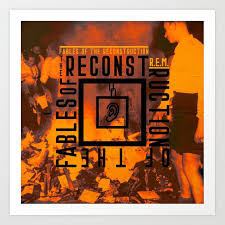
I had the benefit of being on a panel years ago with some scholars who were actually artists, sculptors, talking about memorials, and they were talking about it from a global perspective. So, what happened post-World War II in Germany? What happened at the fall of the Berlin Wall in the Eastern Block? Other countries have had these moments of contemplation and reflection on what happened. But we kind of just normalized it. The fact that the people who fought for the Confederacy were never tried for treason. We never had that sort of reckoning that happened elsewhere. And in fact, that they live on as sort of alt-heroes is deeply problematic. There’s something to be said about the fact that most Americans have such an incomplete understanding of what truly happened. So you have to commend things like the Grant miniseries that came out a little while ago. And, of course, Skip’s work on PBS about Reconstruction, because it’s maddening that we might know so much about some other parts of our history but really so little about this. The fact is that many of us came up with this understanding, or with this lie, that the Confederacy was about states’ rights. And you’ve got documentation from the vice president of the Confederate states saying, “This is about slavery.” Those pieces were omitted, and it’s not omitted by accident, right?
‘…it was a war, and it was a mission grounded in White supremacy and the subjugation of Black people and Native people. That’s what it was. There’s no way of getting around that this is part of our birth record in the United States…
We’re here at the University of Texas and (Confederate officer and University of Texas regent) George Littlefield. And our good friend Leonard Moore is the George Littlefield Chair. George Littlefield’s whole sort of mission was to preserve the Lost Cause: let’s make sure that it’s always regarded that these were noble people. And I want to get very clear that you can always have regard for individuals or family members who took up arms because their family was part of this. But in its aggregate, it was a war, and it was a mission grounded in White supremacy and the subjugation of Black people and Native people. That’s what it was. There’s no way of getting around that this is part of our birth record in the United States. And it’s time we became resilient enough to actually confront that and deal with that.
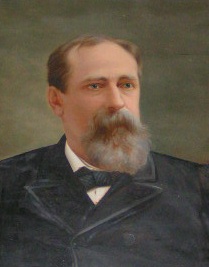
J. Suri: How, Rich, has this mythical and distorted history that you’ve just recounted so well, how has it been a barrier to diversity, particularly in leadership positions across our society — political leadership positions, athletic, university, business? You’ve been writing and thinking about this a lot. What’s the connection between the history and the lack of diversity in our leadership?
Reddick: That’s a really important point because people have become ahistorical. And they’re like, “Well why does history matter?” Like, “just leave them alone there. They’re not bothering anybody.” But as we mentioned earlier, the statuary and the memorials for the Confederacy had two, sort of, peaks. One was around 1890 to about 1910 or so. And that’s the time when most of the soldiers the Confederacy were beginning to die. So there’s this interest in seeing them memorialized in that way. The next period of time, when it starts ramping up, is about 1950. And 1950, of course, is the birth of the civil rights movement in this country. So these statuary and the symbols are not necessarily meant to only commemorate; they’re also there to intimidate. They’re there to remind people of their place in society. Years ago I had a talk at the University of North Carolina, Asheville. And I met with a couple of Black colleagues there. And they said, we should go downtown and get a lunch and, you know, hang out. We did. So we go downtown and, my God, the downtown,… Asheville’s sort of a commemoration of the Confederacy and this is something to behold.
J. Suri: Zachary’s reminding me that we were in Asheville a few years ago, and we had just that same reaction, just even as tourists walking through there.
‘…There’s a discomfort I have any time I go to a place, even the capital, where I see these sorts of statues looming over. It says something about the values of the institution…’
Reddick: Yeah, exactly. When you look there you see these spires and in these statues and you see that this regiment came through here. When you put yourself in that situation, especially myself as a Black person, I’m like, OK, these people clearly did not have my best interest in mind and you are embracing that idea. You’re not simply saying like, for instance — I’ll give a shout out to our colleagues over at the Briscoe Center for American History at UT — that you are contextualizing what this meant. There’s a fantastic display; they have there of some of the statuary. In fact, the Jefferson Davis statue in the museum there is contextualized. It explains, why Littlefield wanted the statue present, what was the controversy. And it was controversial from the first time it got there in the 1920s until it was taken down in 2015. That’s how we think about these things. And certainly, the position that it doesn’t bother me, or that it’s honorary, is something that people who hold privilege, or who don’t hold the identities of the group subjugated, will often feel. There’s a discomfort I have any time I go to a place, even the capital, where I see these sorts of statues looming over. It says something about the values of the institution. And that’s codified in the normalization, like you said, of White supremacy. So, it’s not a long line between statuary and imagery to attitudes to values, and on to what you feel is acceptable, to who you can envision in leadership, and to who you can’t.
Every person who is not part of the dominant cultural identity that is seen in business or academia has dealt with this. If you’re a queer person, if you’re a woman, if you are of any identity or person of color, you’ve been told or confronted at some point in time that, “I am clearly the minority in this space.” And people are either telling me overtly or covertly that what an exception you are, or asking, “do you really belong here?” And it’s funny because people often think that doesn’t happen. It does. People will say things like, “Well, you know, you went to what institution? Oh wow, when were you there?” Like, how is it possible you had that experience? You don’t belong there. These micro invalidations, and sometimes they’re macro invalidations, occur constantly. So, this is really something that is enduring, and the statuary is a very clear southern launching point for it. Like, statuaries, budgets, positionality, all express institutional values. And when you look at those things, you know clearly where an institution stands, and that’s why I’m so glad that we made the decision in 2015 to take down the Confederate statues on this campus because it conveys something about the values of your institution.
Z. Suri: How do we begin to rewrite this narrative of the Lost Cause within our institutions, and how do we use that to promote diversity?
Reddick: It’s a good question. Well our good friends who are historians are really at the vanguard of that work. And, of course, as an educator and somebody that works in the school of education, I think it’s critically important that we start this process early. You shouldn’t have to have the benefit of having George Wright as your professor to undo and unpack what you learned or didn’t learn. And my colleagues Angela Valenzuela, Keffrelyn Brown, Anthony Brown, and Daina Berry, who are doing this great work to catapult ethnic studies while, at the same time, also integrating the critical perspectives that are needed to talk about this American manifest destiny story: basically, it’s great, and we won, and it’s been fantastic. And instead, it’s a more honest conversation. And by no means am I saying that the British have this down, but when I was in the UK last year with my students — I took a group of 17 students and my family to Cambridge for a month and my student group was half students of color — we sat in a session of British history from 1066 to 2019.
J. Suri: Wow.
Reddick: Exactly! Because a country that is that old has a way of reconciling and discussing its past that we haven’t gotten to. I think there’s a fragility about how we view ourselves as a nation. And we can’t say our involvement and colonial expansion was a terrible thing. It was terrible for the Filipinos, it was terrible for the Cubans, it was terrible for the Panamanians. We can’t have that conversation and reconcile the fact that people we hold up who are parts of those things are indeed flawed people. They can have accomplished amazing things, but also had very, very troubled pasts. The great example of that’s probably Thomas Jefferson. We all grew up respecting Thomas Jefferson and his genius, but we didn’t know he was a rapist and we didn’t know that he had a family that was biracial that he never really acknowledged. He grappled with this his whole life. But that’s the kind of discussion we have to have. And it’s instructive to us in the present day about what our legacy will be. If we’re not confronting our own inconsistencies and problematic issues in our own lives, we’re subject to the same kinds of things.
So I think it’s very much part of this nation’s development. We really have to grapple with what that looks like. And it’s not going to be comfortable. It’s going to be painful because oftentimes the people we’re talking about you can find their descendants walking around today. And kudos to, for instance, Robert E. Lee’s family, who have come out publicly and said, “You know, we don’t need to see the statues of our ancestor. That’s not necessary.” It’s really refreshing when people have kind of personified what it means to be honest and reflect on what sins we’ve committed as a nation. That gives us opportunities to think about imagining a present and a future that is inclusive, that does acknowledge the things that people can, in fact, have accomplished amazing things in their lives but also be deeply problematic. They’re not dichotomous experiences and that’s really the story of humanity. I think, from the major to the minor, we’ve all done things that are commendable. We’ve all done things that we’re not happy about, but the way to resolve that is not by saying everything’s great la la la, fingers in the ears. It’s not the way to do it. The way to do it is to say, “this is a complex person with accomplishments that are noteworthy and should be acknowledged, but also the reality is this person was a part of a system that perpetuated the subjugations of peoples.” And that needs to be embraced. And, like I said, it’s not comfortable.
I mean, every single time when I think about my step-up books, my little series of books I had as a kid, “Meet Robert E. Lee,” you know, hey, cool guy. Actually, let’s talk about that in a more complex manner. And you can still walk away and say that these people did commendable and amazing things, but I’m going to weigh that with the other things they did. And that might actually have me thinking this person is noteworthy as a historical contributor, but not noteworthy in the sense to have statuary or memorials and so on so forth.
J. Suri: It’s such a good point, and it really reflects how the scholarship has advanced in the last 10 to 20 years. I mean, you have scholars like Annette Gordon Reed and Peter Onuf who have elucidated just what you talked about with Thomas Jefferson. His mistreatment and his raping activities and things of that sort. But at the same time, they’ve also argued that there’s some of Jefferson we need to keep, that it doesn’t diminish. In fact, it gives us a fuller sense of his struggles with freedom and power and liberty and slavery. It doesn’t mean we apologize, but it doesn’t mean we throw him out either. It makes him, actually, a more interesting and important figure for our struggles today. That fullness, that fuller portrait, can be so much more helpful for us. How do we create those fuller portraits that are more inclusive for our students and for people in the workforce today who are serious about bringing diversity? I think there’s enormous goodwill and an enormous desire among so many people to do this. So what should the new statuary look like, Rich?
Reddick: Well, as as you were speaking, I’m looking at the Hemingses of Monticello on my shelf here. So yes Annette Gordon Reed’s work and that of others is worth embracing. First of all, the fact that new generations of scholars, who tend to be women and women of color, have really interrogated these histories in a way that we haven’t seen before — from the hagiography to these more complex stories of people who struggled with things they knew were inadequate in their own selves. Maybe we need to move away from that kind of memorialization. Maybe it’s time to move past that kind of, of imagery and and move on to more naturalistic ways of moralizing. I’ve had conversations with our good friend Ted Gordon and other folks about how we remember and honor the contributions of people every single day and the diversity of Texas. Of course, I think every day about the students that came as African American working students to campus as undergraduates in 1954. And, of course, our graduate students who came in 1950, many of whom are still around. That is my motivation and their contribution. There are no statues of them and frankly, a lot of them would say, “we don’t really think we need statues, that we will be remembered but remembered in a way that we are living history and the things you do on a daily basis that you’re able to access are things that are our experiences contributed in some way.” I think it is really about reimagining our memory, instead of the default being a statue. Maybe the default is multimedia presentations about who people are and what people did and being attentive to not just leaders and causes, but people who work every day.
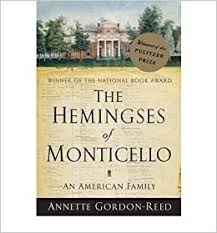
I have this wonderful experience of having a lot of friends from the group that is part of the Rag Radio, which are a group of former students who came here in the sixties. They worked on civil rights issues and antiwar issues. And it really is a story of everyday ordinary people. Students who came to the University of Texas or came to Austin and got involved and, you know, got deeply attached. So I think about Thorne Dryer and Alice Embree and my good friend Hortensia Palomares and I get to hear those stories and they talk to my students about what they did 50 years ago. It’s as you said a much more humanizing portrait of their experiences. I always gravitate to those kinds of stories. It’s much more interesting to hear somebody say, “you know, I had no idea what this cause was. But when I got here, I saw these things happening and I picked up a picket sign or I got involved in the political movement, and one day I was in charge. Or one day, we got into battle over the intersectionality of our movements and said, ‘should we talk about anti-war and racism as well’.’’ All those things became part of the discussions. Those kinds of re-imaginings are important so that we don’t simply fall into, a kind of tired way of remembering our history and saying it’s going to be a statue of this person. Or we’re going name a high school after this person. It is a way of instead saying, let’s really think about ways to express their contributions and also be attentive to the fact that a lot of times historical memory is in the eyes and images of the powerful, the people who led the movement and not realizing that most movements, if not all movements, included people, women, folks of color, folks with disabilities, folks of all identity groups that are not often thought about. Part of it is understanding our desire to simplify and place historical impact in one being.
J. Suri: I love that description, Rich. I mean, what it seems to me that you are saying is that we have to move away from what is a kind of tokenism, with an obsession with a personality or a name or a statue, and actually go into the narrative space, which is really where democracy occurs, where we’re having conversations and we’re bringing out the multiple points of view and multiple experiences that then in the end, make our institutions the exciting places that they are.
…It’s not simply an issue about what’s happening or what happened 10 years ago. There are tendrils and connections to what’s happening today. And that’s the most fascinating thing about this work…
Reddick: Yes, absolutely. And I think that is exactly what it is. We don’t have to simply gravitate and be part of a very troped way of moralizing the past. And, you know it’s time to think about what that looks like and what that means. I’m so thankful that I was taught by Julie Reuben, my professor at Harvard when I was a graduate student. I worked with her and Julie’s work on anti-war in the sixties was so instructive because it didn’t just gravitate around big name people. There were a lot of people involved in this conversation. That’s what history actually is. And you know, one of the challenges I’m sure you have a history professor is people thinking it’s all them White guys, because at one point in time, that’s what we memorialized. And it’s all about them. Of course, with my experience as a scholar who studies inequity I’m fascinated by the primary source documents of people in my community who I know were at school board meetings who were doing other types of things that need to be regarded. So yes, I absolutely think that we need to start acknowledging. And first of all, not just saying that this is only an historical project. It’s also a project that involves educators, sociologists, anthropologists, public health people. It’s truly interdisciplinary work to bring our work into this space and memorialize lives and remember and also connect to the present. It’s not simply an issue about what’s happening or what happened 10 years ago. There are tendrils and connections to what’s happening today. And that’s the most fascinating thing about this work. I always tell my students of the history of higher education class, that everything we’re talking about has a connection to something you deal with right now.
J. Suri: I think that’s that’s really such a crucial point. And this is where, as you know, we always like to close. How do we go from here to understand and to do this in our lives today? What are some of the ways in which those who don’t have the privilege of being educators and writing books but have to work through these institutions on a day-to-day basis? How can they take this perspective and bring it to their institutions? It seems to me that’s what you’re writing about when you’re talking about and how we have to open our institutions for more diversity. How do we do that? How do we bring these stories in?
Reddick: That’s the struggle. That’s the beautiful struggle we’re all involved in. And I think it’s a matter of localizing the issue. So context matters. In all the pieces I’ve written, there’s a historical context I have to talk about. We’re not talking about a problem in the abstract. We’re talking about a problem that has its roots in social norms and political norms that are a reflection of what happened in this organizational space. So that’s the first thing. We can’t be detached from that historical aspect of it. The other thing, of course, is that we have to have courage. Leaders have to have courage to really look for those issues and not say, “well, I guess we weren’t involved in that so whew…” No, let’s really look in examine where are the places in our organizational history where we could have done better that we’ve learned later on that were problematic and come with this first. I’ll never forget when Ruth Simmons was president of Brown University and she said, “you know, Brown had ties to the slave trade.” This was the nineties and people were like “what are you talking about?” But of course, anything that was part of the American economy, and universities are part of that, were deeply involved in the slave trade.
And then of course you have the excellent work of Craig Stephen Wilder’s Ebony and Ivy, an examination of higher education’s complicit behavior, especially of the institutions that we always talk about. We love the fact that we’re 400 or 300 years old, which also means we were also greatly involved in the chattel slavery. And even when we’re not as, of course, our good friend Ted makes the point, we could be neo-Confederate institutions like the University of Texas, built after and established after the war, but very much embedded in a context of the Confederacy. So it’s courage. It’s courage to confront that. It’s courage to have conversations about what that means. What does it mean to have live in a space like that. And I think sometimes people assume well, you know, a statue is there, a portrait is there, it doesn’t mean anything. But when you think about the all-encompassing aspects of it, it’s overwhelming. And you can understand why people don’t feel they can reach their full potential because of that. And also, like I said earlier, let’s not act as if statuary and portraits and building names don’t actually influence how we think about the current context and the people who occupy those spaces. So I say it’s courage. It’s also what you and I do It’s being engaged in public scholarship. The books are great, the articles are great, but are you doing things in the space that people can pick up in their paper and say, “OK, that’s new, I didn’t know that”? I’m sure you get the same thing. People often say to me, “you know, Rich, I read your piece. I didn’t know this, and I’ve got problems with you …” But if they usually start with that then I’m somewhere in the universe of cool because that is my goal.
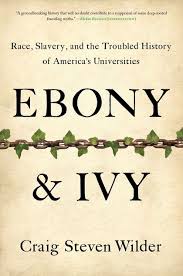
I want to make sure that the things that I had, the privilege of understanding and reading and studying, that it goes to a broader audience and as a public flagship university that’s part of our job. They don’t have the luxury of publishing high impact press and books and have them on shelves and libraries. We need to talk to people in our community and make sure that we’re having a dialogue. Quite frankly, it’s not just a one-way thing. I often will go places and present some ideas and people will say, “well, did you know about this that happened here? “And I’m like, “no, please let me know and educate me.” I see us is being perpetually in this generation of knowledge and learning space and it’s a humble space to be into which I always appreciate. I couldn’t do this if it was just about getting praise and saying great things. No, I learn a lot too
J. Suri: And you model so well in the substance of what you say and how you say it Rich, that this is all a dialogue, that it’s not. It’s not about staking a position. It’s about actually trying to understand and build that dialogue, which is what then opens space for more voices and gives people access who haven’t traditionally had access, which in turn makes our institutions better.
Zachary, does this discussion from Rich give you more courage? Because it seems at at the root of what Rich is talking about is a willingness to open conversations that people sometimes don’t want to talk about. They don’t want to open these conversations for all kinds of reasons. Do you think that other young people are taking from this moment today more courage, and how?
Z. Suri: I think this is a very powerful moment, and I think really, the longest lasting impact that this moment will have is that young people, people I’ve known for a very long time, who were never really willing to talk about these issues are finally opening their eyes to it and willing to have these discussions. We’re finally beginning to see that history isn’t just the mixture of great people who were either heroes or villains. We’re finally trying to see history as a narrative of both good and bad? That’s very complex. That still influences us today.
J. Suri: Well, that’s the most optimistic thing I think one could say. If we open our eyes and start to have these conversations, they create opportunities that haven’t existed for so long. Rich, thank you for your inspiring words for your deep analysis and for modeling the kind of narrative and open discussion that we need so much in our society today. It’s really a pleasure to be your friend and colleague, and I treasure working with you and talking with you.
Reddick: Well likewise, Jeremi and you and Zachary make a great team. I’m always inspired about the importance of connecting what we’re talking about to what Zachary is experiencing. I have to always remind people that the generative part of what we do is not just getting back slaps from our peers, but rather the idea that there’s a young person, that’s saying, “OK, well, now you’re exemplifying for me what I could do, or you said something I really don’t like, and I want to say something to respond to you, and I’m going to read some books and write some stuff to get that going.”So this is all part of a of a dialogue that I’m really proud to be part of. And I’m proud to be part of your cabal of trouble, as John Lewis calls it: good trouble.
So this is all part of a of a dialogue that I’m really proud to be part of. And I’m proud to be part of your cabal of trouble, as John Lewis calls it: good trouble.
Richard J. Reddick is the associate dean for equity, community engagement and outreach at the College of Education at UT Austin. Jeremi Suri holds the Mack Brown Distinguished Chair for Leadership in Global Affairs, a joint appointment of the Department of History and the LBJ School of Public Affairs. Zachary Suri is a sophomore at Austin’s Liberal Arts and Science Academy, or LASA.
This interview was opened with a scene-setting poem by Zachary Suri. Please read ‘Today the pedestals are empty’ here



